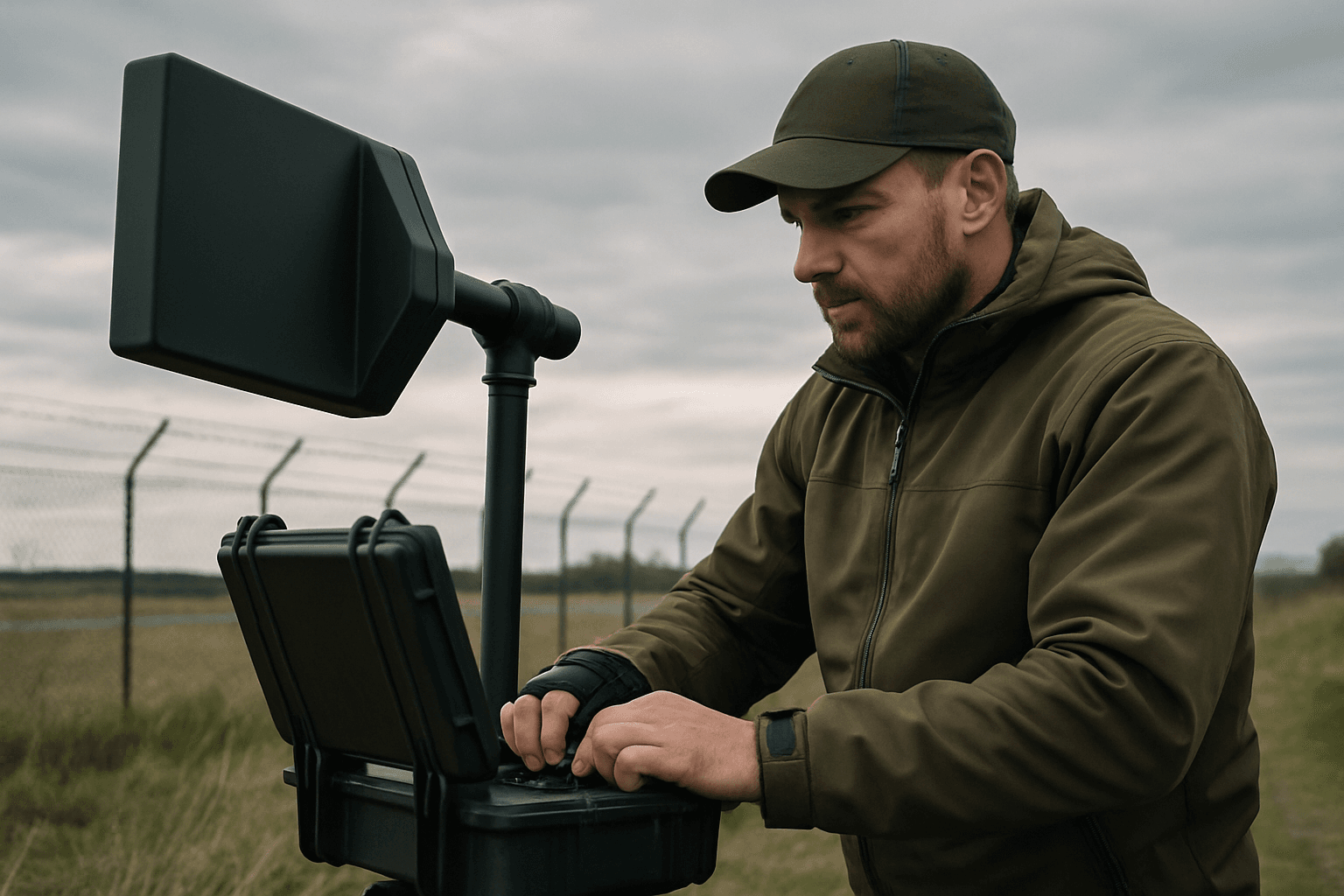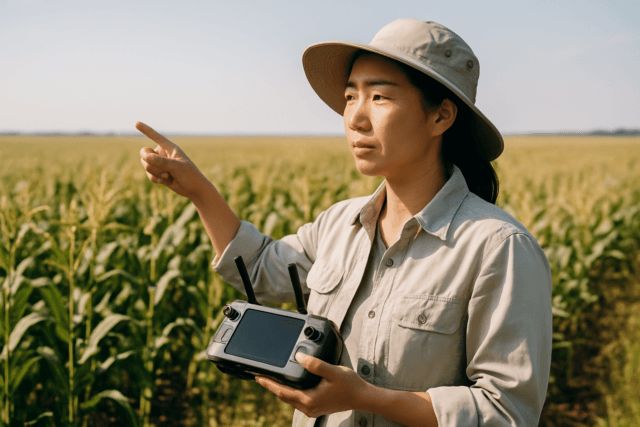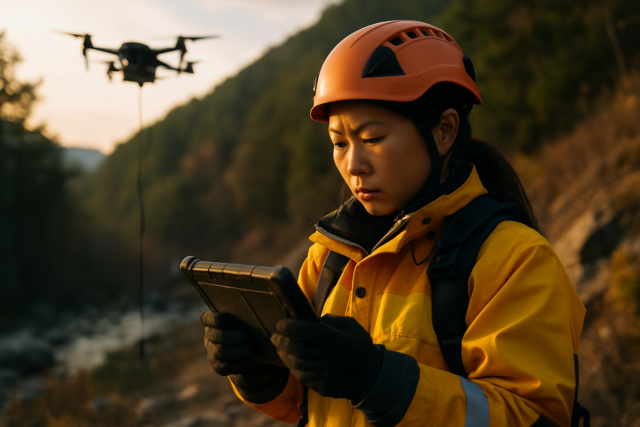The proliferation of drones has brought numerous benefits, but also new security challenges. Counter-Unmanned Aircraft Systems (C-UAS), or drone countermeasures, are becoming increasingly crucial for protecting critical infrastructure, public safety, and military operations in the UK. This article explores the multifaceted landscape of drone countermeasures, examining the technologies, strategies, and regulatory frameworks employed to mitigate the risks posed by rogue drones.
The Escalating Drone Threat
Unmanned Aerial Systems (UAS), commonly known as drones, have evolved from simple recreational devices into sophisticated tools with diverse applications. However, their accessibility has also made them potential instruments for malicious activities, including:
- Espionage and Terrorism: Drones can be used for covert surveillance, delivering explosives, or disrupting public events.
- Smuggling: Drones can transport illegal goods across borders or into secure facilities.
- Disruption of Critical Infrastructure: Drones can interfere with airport operations, power grids, and other essential services.
- Cyberattacks: Drones can be weaponized to deliver malware or disrupt communication networks.
- Political Protest: Drones can be used to disrupt public order.
- Hostile Reconnaissance: Drones can perform surveillance.
Given these diverse threats, the development and deployment of effective drone countermeasures are paramount.
Counter-Drone Technologies: A Multi-Layered Approach
Effective drone countermeasures involve a layered approach, combining various technologies to detect, identify, track, and neutralize rogue drones.
1. Detection Technologies
The first step in countering drone threats is detecting their presence. Various technologies are employed for this purpose:
- Radar Systems: These systems use radio waves to detect the presence and movement of drones, even in adverse weather conditions.
- Radio Frequency (RF) Detection: These systems analyze radio signals to identify the communication links between drones and their operators. Passive RF analysers can identify multiple drones and locate the drone operator.
- Acoustic Sensors: These sensors detect the sound of drone motors, providing an additional layer of detection.
- Optical Sensors: These systems use cameras and thermal imaging to visually identify drones, especially at night or in low-visibility conditions. Electro-Optical (EO) Surveillance, Threat Acquisition (STA) and Reconnaissance systems such as the Nerio ULR are used.
2. Identification Technologies
Once a drone is detected, it is crucial to identify its type, purpose, and operator. Identification technologies include:
- Visual Identification: High-resolution cameras and optical sensors can capture images of drones, enabling visual identification and assessment of their payloads.
- RF Signal Analysis: Analyzing the radio signals emitted by drones can reveal their make, model, and flight path. Cyber systems can provide significant operational information about the detected drone.
- Drone Forensics: Analyzing captured drones or their components can provide valuable information about their origin, purpose, and operator.
3. Tracking Technologies
Tracking the movement of drones is essential for predicting their trajectory and intercepting them if necessary. Tracking technologies include:
- Radar Tracking: Radar systems can continuously monitor the position and movement of drones.
- RF Tracking: RF tracking systems can follow the radio signals emitted by drones, providing real-time tracking data.
- GPS Tracking: In some cases, it may be possible to track drones using their GPS signals.
4. Neutralization Technologies
The final step in countering drone threats is neutralizing them. Various methods can be used to achieve this:
- Jamming: This technique disrupts the communication links between drones and their operators, causing them to lose control. SkyFence is an example of an electronic countermeasures system that disrupts command and navigation radio transmissions.
- Spoofing: This technique involves sending false GPS signals to drones, causing them to fly off course or land in a designated area.
- Directed Energy Weapons (DEW): These weapons use high-powered lasers or radio waves to disable drones. Radio frequency directed energy weapons can neutralize multiple targets simultaneously.
- Netting: This involves using nets to physically capture drones.
- Interception: This involves using other drones or manned aircraft to intercept and disable rogue drones.
CUAS Systems in Practice
Several companies offer integrated CUAS solutions that combine multiple detection, identification, tracking, and neutralization technologies. Leonardo’s Falcon Shield is a rapidly deployable, scalable and modular system designed to address the threat from low, slow and small uncrewed air systems (UAS). These systems are designed to protect critical infrastructure, military bases, and other sensitive areas.
Regulatory Frameworks and Legal Considerations
The use of drone countermeasures is subject to legal and regulatory frameworks that aim to balance security concerns with privacy rights and the legitimate use of drones. Key considerations include:
- Legality of Jamming and Spoofing: In many jurisdictions, it is illegal to jam or spoof radio signals, as this can interfere with legitimate communications and navigation systems.
- Use of Force: The use of force against drones must be proportionate to the threat they pose and comply with international law.
- Data Privacy: The collection and storage of data related to drone activity must comply with data privacy regulations.
The UK Civil Aviation Authority (CAA) has responsibility for safeguarding planes arriving at and departing from UK airports and staying ahead of the threat posed by drones is critical.
The Future of Drone Countermeasures
The field of drone countermeasures is constantly evolving, driven by advancements in drone technology and the increasing sophistication of drone-based threats. Future trends include:
- Artificial Intelligence (AI): AI is being used to improve the detection, identification, and tracking of drones, as well as to automate countermeasure responses.
- Drone Swarm Mitigation: Developing strategies and technologies to counter drone swarms, which pose a significant challenge due to their coordinated nature and ability to overwhelm defenses.
- Integration with UTM Systems: Integrating CUAS systems with Unmanned Traffic Management (UTM) systems to enable the safe and efficient management of airspace.
- Enhanced Detection Capabilities: Improving the ability to detect drones in complex environments, such as urban areas and cluttered airspace.
- Development of Non-Kinetic Countermeasures: Focusing on non-destructive countermeasures, such as jamming and spoofing, to minimize the risk of collateral damage.
Conclusion
Drone countermeasures are an essential component of modern security strategies. As drone technology continues to advance, it is crucial to invest in the development and deployment of effective counter-drone systems to mitigate the risks posed by rogue drones and safeguard critical infrastructure, public safety, and national security in the UK. By combining advanced technologies, robust regulatory frameworks, and ongoing innovation, the UK can stay ahead of the evolving drone threat and ensure the safe and responsible use of airspace.





